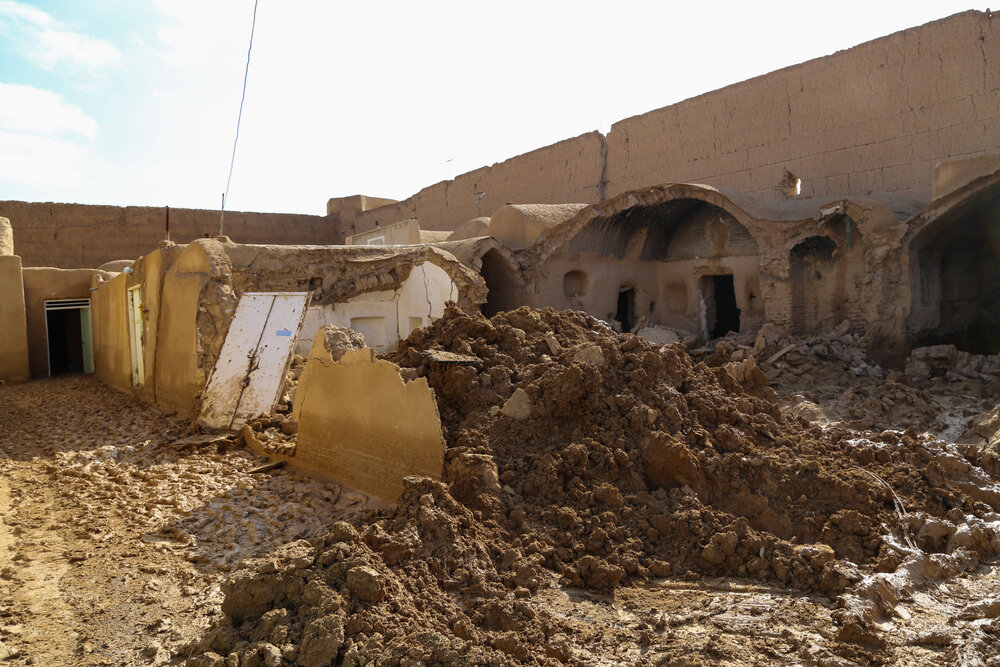Human factor behind fortress destruction in Abarkuh, expert says

TEHRAN – A human factor is behind the destruction of the Firuzabad fortress, which was severely hit by devastating floods last week, head of Yazd province’s department for the cultural heritage and tourism has said.
The floods combined with heavy rains inflicted over 70 percent damage to the mudbrick monument, which is located in Abarkuh county of the province, Mostafa Fatemi said on Monday.
Due to the rain, two embankment dams, which are located further away from the historical fortress, were broken and caused the flood that damaged all the historical and residential buildings in the region on its way, the official noted.
The cultural heritage department was unaware of the existence of the dams, and those water structures were constructed without any coordination with, or permission from, the relevant organizations, near such an important region that is full of historical and ancient monuments, the official added.
That is why the human factor is taken into account, as the castle has been standing for more than a century and there has been no flood in this region for at least the past 200 years, so there was no possible way for cultural heritage experts to predict the flood, he explained.
Dating back to the late Qajar era (1789–1925) and early Pahlavi period (1925-1979), the Firuzabad fortress is one of the few residential fortresses in the country.
Cultural heritage experts have estimated the flood caused some 100 billion rials (about $2.4 million at the official rate of 42,000 rials) damage to the historical monuments dotted in the region.
Not long ago, the fortress had undergone a restoration project to put the monument on the tourism map of the region, Fatemi said.
He also noted that although some walls and ceilings collapsed under the water pressure, the amount of damage was less than expected, however, there is still moisture inside the building, which could cause further damage.
Firuzabad fortress was inscribed on the National Heritage list in 2007.
From ancient to modern times, defensive walls have often been necessary for cities to survive in an ever-changing world of invasion and conquest. Fortresses were designed primarily to defend territories in warfare and were also used to solidify rule in a region during peacetime.
Many of the fortifications of the ancient world were built with mud brick, often leaving them no more than mounds of dirt for today’s archaeologists.
Abarkuh is famed for its several historical castles and fortresses as well as being home to a 4000-year-old cypress, which is inscribed on the National Heritage List. Venetian merchant and explorer Marco Polo described the tree as one of the most stunning cypress trees he had ever seen in Iran.
ABU/AFM
